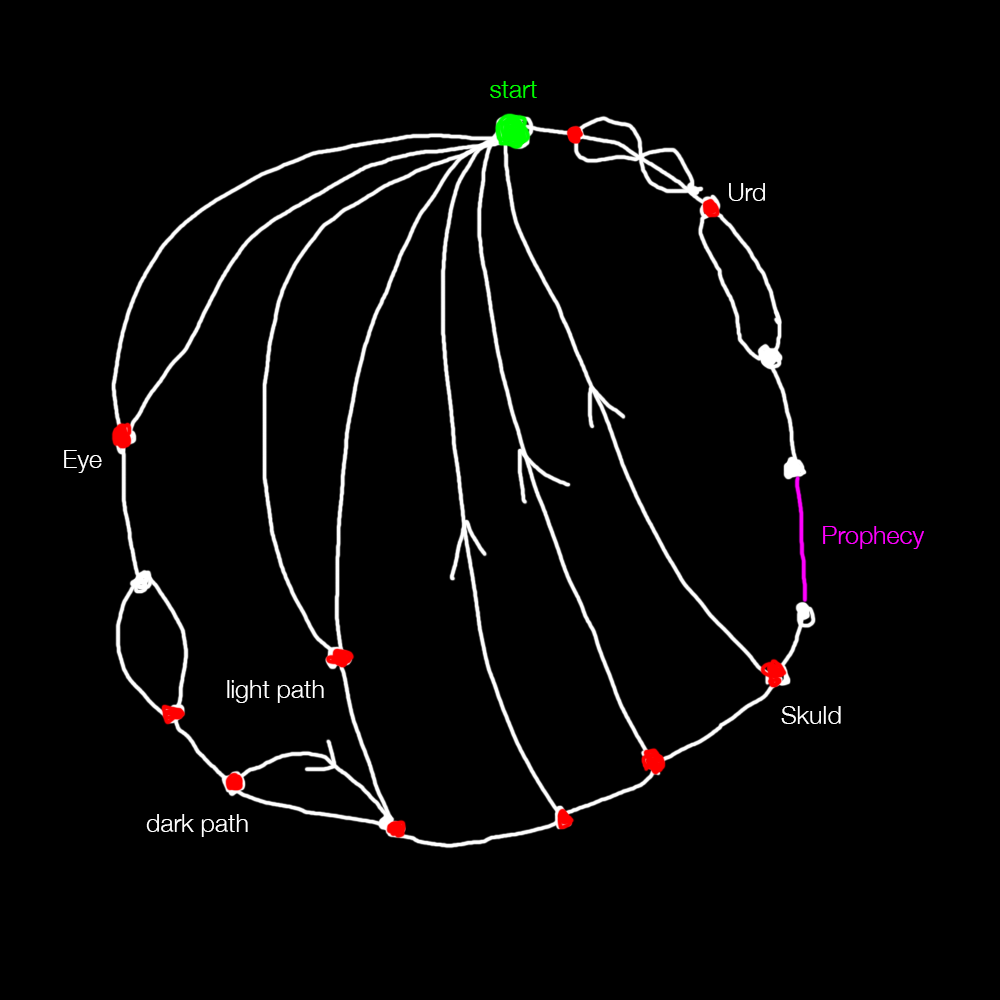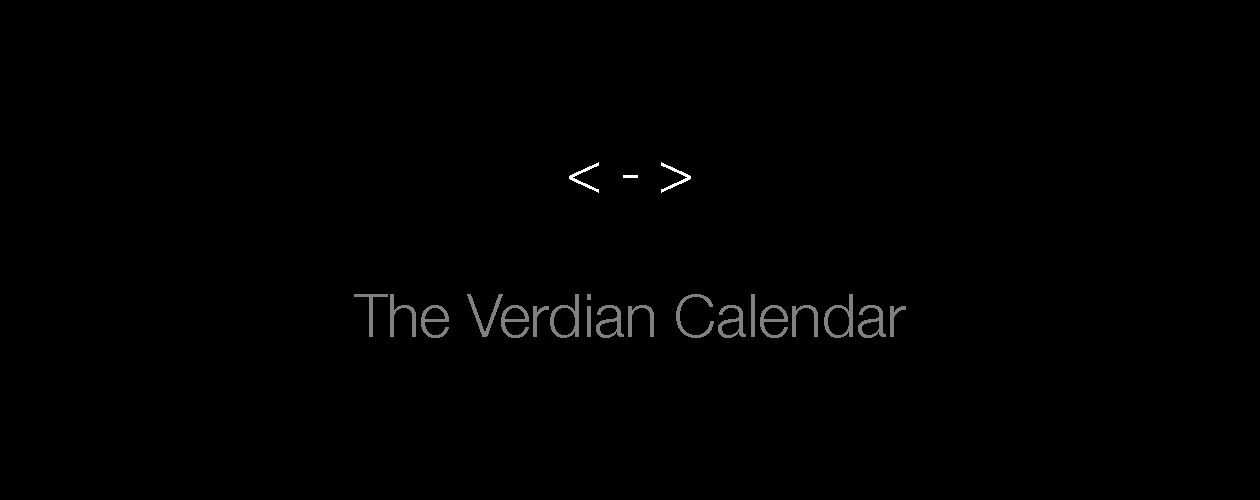Postmortem
Introduction
The Verdian Calendar was my first exploration of the interactive fiction genre. Interactive fiction is most unique in regards to shaping the player experience mainly through patterns of texts. Standard patterns can vary among different choice-based games to best fit the scenario. These patterns often converge into a singular, linear path as much as it branches into newer ones to balance the illusion of choice and time.
In the case of The Verdian Calendar, I decided instead to loop the pattern into a cycle. This was mainly because the original plot was impractically far too long and detailed. Implementing a continuous cycle to the story provides new information on each run, but also presents them as openly optional. In addition, doing so allowed me to focus on other aspects to better the game, such as organizing branches and paths, defining a writing style, and making visual choices.

What went right / what went wrong
In terms of designing a viable choice-based pattern, I believe I pulled through, though very amateur. I was introduced to ink, a flexible scripting language for interactive fictions, which became the sole framework for the project. Although confusing at first, as with any unfamiliar tool, ink proved to be easy to learn at its most core functions; knots, diverts, and choices. Through these three simple elements, I was able to create a basic loop that functions correctly.
However, I merely managed to qualify at the most basic level. ink is obviously a much more powerful tool capable of complex branching based on specific variables and sequences, and I barely scratched the surface. I believe part of the reason was because I mostly obsessed over the concept details rather than exploring different methods of approaching them. I stuck to the basic loop once it was successfully created, then moved on without looking back. In hindsight, utilizing ink more effectively and personally would've potentially produced a more unique product that is able to differentiate itself better from others projects, although the process might seem intimidating.
The next step was writing the story. I had conceptualized a fitting plot before starting the project, but writing it out in actuality and deciding how to best present and arrange the words proved to be challenging for an inexperienced writer and developer. While I enjoy reading as leisure, I struggle to write original content. Knowing this about myself, I strived to maximize other aspects that could potentiate the story experience despite my literary incompetence, most notably visibility and immersion. I chopped the dialogues to present them in short clear sentences, one at a time, to engage the players literally word by word. The font was decisively sans-serif and set white on black to fully maximize clarity (aside from the colored texts during the 'Prophecy' section). I believe by adding these elements, I was able to support and present the story better than it actually is.
On the other hand, these elements have the potential to be detrimental. The visual aesthetics of my choices can justifiably seem over-simplified and primitive, which can turn off potential players who seek detailed visual stimulation. The short dialogue feature can instead ruin the immersion due to players having to constantly click for each sentence they read. I was aware of this problem since the beginning, but never fully figured how to work around it. However, during my final presentation, I received a suggestion to solving the issue by implementing a feature for automized dialogues, similar to the 'Skip' and 'Auto' options in Doki Doki Literature Club! This solution was extremely relevant to my project in particular because the game revolved around a continuous cycle with contents that often repeat themselves.
Creating and balancing choices proved also to be challenging. Before translating my concept into lines of codes, I had to limit the choices into binary options - this or that. This decision mainly served to reduce the original story length into a digestible experience. Although having 3 options would've been most ideal as an interactive fiction, adding the extra option was rough on the entire preexisting story structure, especially since the plot was continuous and most suitable for binary options.
Some notable details provided life to the game. Keeping the loops in mind, I easily implemented the ability to skip certain key dialogues after the first run of the game by routing different scenes with different ink files. I also utilized different ink files to switch up the font colors according to their context. Professor John Bruneau taught how to visually fade between each text. Such minuscule details were particularly helpful for such a basic text-based game, vastly improving its overall quality and immersion for players.
What I learned
I definitely learned how various developers use various narrative methods most appropriate for their games. Different structures can yield different purposes. Initially settling on a looping structure ultimately shaped the project into a somewhat dark and adverse experience, which I found interesting. Personally, the concept of loops tend to surface existential dread within me, which may be the reasoning behind the theme of the game. Since the interactive fiction genre focuses on integrating a story into a personalized player experience, the project allowed me to hone my narrative skills.
There were a lot of aspects I wasn't satisfied, one being the poor balance between risk and reward - successfully encouraging players to play multiple runs of the game. Currently, there isn't much encouragement or ease hinted towards the players to do so aside from obtaining more bits of information, when in fact multiple runs is the core theme of the game. While honing your own ideas can be valuable, they can provide nothing without accessibility from others.
Get The Verdian Calendar
The Verdian Calendar
The Last Tree on Earth.
| Status | Released |
| Author | leed168 |
| Genre | Interactive Fiction |
| Tags | Mystery |
